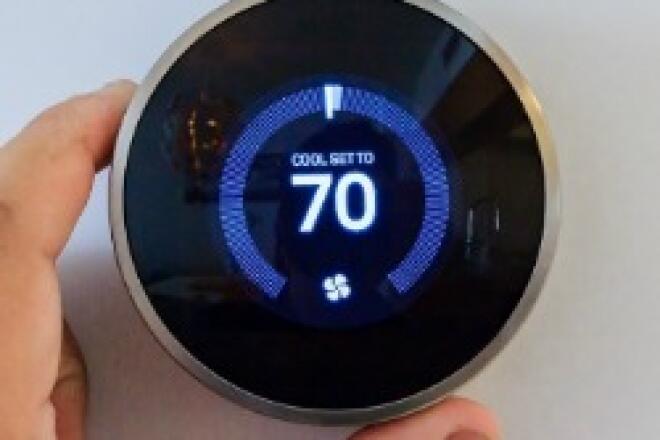
5 Ways to Save Energy as a Renter
If you’re among the third of Americans who rent their homes, you might think that there’s not a lot you can do to reduce your home’s energy use or lower your carbon footprint.
While there are certain limitations for renters compared to homeowners (like installing solar panels or purchasing high-efficiency appliances), there are still many impactful actions you can take to become a smarter energy consumer.
In this month’s blog, we explore five steps that renters can take to be smarter energy consumers:
1. Ask your landlord to get a home energy audit.
If you feel comfortable talking with your landlord or property manager about improving your home’s energy efficiency, a great starting place is requesting a home energy audit, which can identify inefficiencies in your home’s energy usage. The audit will identify low-cost steps that your landlord can take to improve your comfort and lower your bills – and improve the property for future tenants.
Upgrades could include adding caulk around your windows, weatherstrips around doors or insulation in the attic to stop air leaks. If you’re not comfortable asking your landlord – or if they’ve denied your request for an energy audit – there are still many steps that you can take that can cut down your bills that we’ll look at next.
2. See if there’s a better rate plan for your household’s energy usage.
Many energy providers now offer more than one way of charging customers for the electricity they use, and by getting on a rate plan that better fits your typical electricity use, you might be able to lower your bills. With a traditional rate plan, you’re charged the same price for each kilowatt-hour of electricity used regardless of the time of the day.
However, with a time-of-use (TOU) rate, electricity gets costly during peak hours – usually from 4 to 8 p.m. – and can be very inexpensive at other times of the day. By avoiding the peak, you could lower your monthly bills with no changes to your home. If you think a rate plan like TOU could work for you, contact your energy provider for more information. They may have online tools that can help you determine the best rate plan, or they may be able to conduct a rate analysis for you.
3. Upgrade your most-used light fixtures to LED bulbs.
If your home still has out-of-date incandescent bulbs, upgrade the light fixtures that you use the most to energy-efficient LED bulbs, which “use at least 75 percent less energy and last up to 25 times longer” compared to incandescent bulbs. Today, LEDs are relatively inexpensive at around $10-12 for a four pack, and with just one of these packs, you can make a noticeable dent in your overall energy usage for the rest of your lease. Save the old bulbs, and you can take your LEDs with you to your next place.
Plus, you may be able to get an even better deal on LEDs if you go through your energy provider. Many energy companies now have online marketplaces with instant rebates on energy-efficient products, like thermostats, power strips and more. Other energy providers even offer free or low-cost energy savings kits that include a pack of LED bulbs – or your landlord may be willing to upgrade the bulbs to improve the unit for future tenants.
4. Change the direction of your fans depending on the season.
Did you know you can change the direction of your ceiling fans? While most people know about the cooling effect of fans during the summer, not everyone knows that they can also help keep your home comfortable in the cold. In the fall, before cool temperatures hit your area, you should switch your fan to run clockwise and turn it on its lowest speed. This will pull cooler air toward your ceiling and push down the warmer air that collects near the ceiling.
In the springtime, when warmer weather is on its way, adjust the blades to rotate counterclockwise, which will push air down and create a “wind chill” effect. According to the Department of Energy, you can save up to 15 percent on your energy bills with this little-known trick. Also, don’t forget to turn the ceiling fan off when you leave a room to save energy. Ceiling fans cool people and not rooms – leaving them during warmer weather will only waste electricity.
5. Don’t overlook the importance of small changes to your routine.
Finally, there are many small steps that you can take that, when added together, will have a noticeable impact on your bills. For example, run your dishwasher only when it’s completely full, and when washing your laundry, use cold water to maximize energy savings. And be sure to turn off lights and fans when not in a room!
You can also make a difference by cutting down on standby power. Many of the electronics in your home – such as your TV, gaming consoles and coffee maker – still draw power even when turned off, and this could account for five to 10 percent of your home’s energy usage. Unplug these devices or turn them off via a power strip to reduce this energy waste.
While it’s true that renters don’t have the same ability as homeowners to make substantial changes to their homes, there’s still a lot that can be done. If you rent your home, talk to your landlord and your energy provider and make a plan to become a smarter energy consumer.
To learn more about saving energy as a renter, check out our new fact sheet and video in the Becoming a Smarter Energy Consumer series here.



